Trump claims victory on NATO defense spending in freewheeling news conference
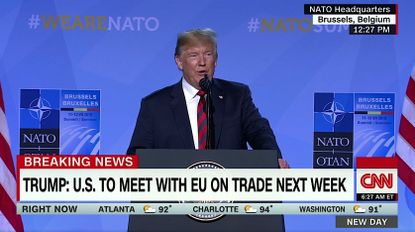

President Trump told NATO leaders in person and on Twitter at a Wednesday-Thursday summit in Brussels that he wants them to raise their national defense spending to 2 percent of GDP more quickly than the 2024 deadline agreed to in 2014, and maybe raise it to 4 percent, prompting an emergency session of NATO leaders Thursday morning. Trump also threatened to break with NATO and have America go it alone if other members don't raise defense spending quickly enough, NATO officials and diplomats tell Politico. "NATO officials said Trump was furious over media coverage suggesting that the first day of the summit had proceeded calmly, and that he had demanded to hold a press conference immediately after the morning meeting."
In that news conference, Trump called the NATO summit a success, insisted "the United States was not being treated fairly, but now we are," and said “I believe in NATO." When asked, Trump said he thinks he "probably can" pull the U.S. out of NATO without the explicit approval of Congress, "but that's not necessary" now that other countries have made "a real commitment" to raise defense spending to 2 percent of GDP in a "relatively short period of years."
Trump painted the commitment to increase defense spending as a personal victory, though French President Emmanuel Macron said the "very detailed" final communiqué "confirms the goal of 2 percent by 2024. That's all." Trump also said fellow NATO leaders had thanked him for making them agree to spend more on defense and for meeting with Russian President Vladimir Putin, promoted the quality of U.S. defense contractors and his golf resort in Scotland, and touted his Electoral College victory. German Chancellor Angela Merkel, whom Trump had reportedly singled out by first name in a breach of protocol, called the summit "intense."
Subscribe to The Week
Escape your echo chamber. Get the facts behind the news, plus analysis from multiple perspectives.

Sign up for The Week's Free Newsletters
From our morning news briefing to a weekly Good News Newsletter, get the best of The Week delivered directly to your inbox.
From our morning news briefing to a weekly Good News Newsletter, get the best of The Week delivered directly to your inbox.
Sign up for Today's Best Articles in your inbox
A free daily email with the biggest news stories of the day – and the best features from TheWeek.com
Peter has worked as a news and culture writer and editor at The Week since the site's launch in 2008. He covers politics, world affairs, religion and cultural currents. His journalism career began as a copy editor at a financial newswire and has included editorial positions at The New York Times Magazine, Facts on File, and Oregon State University.
-
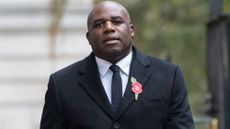 Best of frenemies: the famous faces back-pedalling and grovelling to win round Donald Trump
Best of frenemies: the famous faces back-pedalling and grovelling to win round Donald TrumpThe Explainer Politicians who previously criticised the president-elect are in an awkward position
By Chas Newkey-Burden, The Week UK Published
-
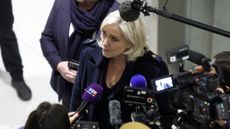 Quiz of The Week: 9 - 15 November
Quiz of The Week: 9 - 15 NovemberHave you been paying attention to The Week's news?
By The Week Staff Published
-
 The Week Unwrapped: Will China's 'robot wolves' change wars?
The Week Unwrapped: Will China's 'robot wolves' change wars?Podcast Plus, why are Britain's birds in decline? And are sleeper trains making a comeback?
By The Week Staff Published
-
 British warship repels 'largest Houthi attack to date' in the Red Sea
British warship repels 'largest Houthi attack to date' in the Red SeaSpeed read Western allies warn of military response to Iranian-backed Yemeni rebels if attacks on ships continue
By Richard Windsor, The Week UK Published
-
 Houthi rebels claim Red Sea ship attacks
Houthi rebels claim Red Sea ship attacksspeed read Iran-backed Yemeni group vows to escalate aggression towards Israel-linked vessels in revenge for Gaza war
By Harriet Marsden, The Week UK Published
-
 Israel plans next phase of Gaza war as first hostages released
Israel plans next phase of Gaza war as first hostages releasedSpeed read After four-day ceasefire 'we will not stop' until destruction of Hamas, says Israel
By Harriet Marsden, The Week UK Published
-
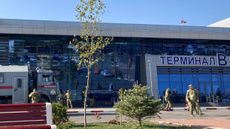 Mob storms Russian airport 'looking for Jews'
Mob storms Russian airport 'looking for Jews'Speed Read Plane from Israel surrounded by rioters chanting antisemitic slogans after landing in Russia's Dagestan region
By The Week UK Published
-
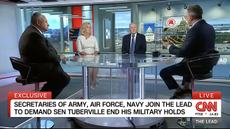 Tuberville's military promotions block is upending lives, combat readiness, 3 military branch chiefs say
Tuberville's military promotions block is upending lives, combat readiness, 3 military branch chiefs saySpeed Read
By Peter Weber Published
-
 Ukraine's counteroffensive is making incremental gains. Does it matter in the broader war?
Ukraine's counteroffensive is making incremental gains. Does it matter in the broader war?Speed Read
By Peter Weber Published
-
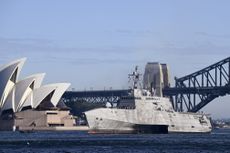 US commissions first-ever Navy ship in a foreign port
US commissions first-ever Navy ship in a foreign portSpeed Read
By Justin Klawans Published
-
 British spy chief, Wagner video suggest Prigozhin is alive and freely 'floating around'
British spy chief, Wagner video suggest Prigozhin is alive and freely 'floating around'Speed Read
By Peter Weber Published